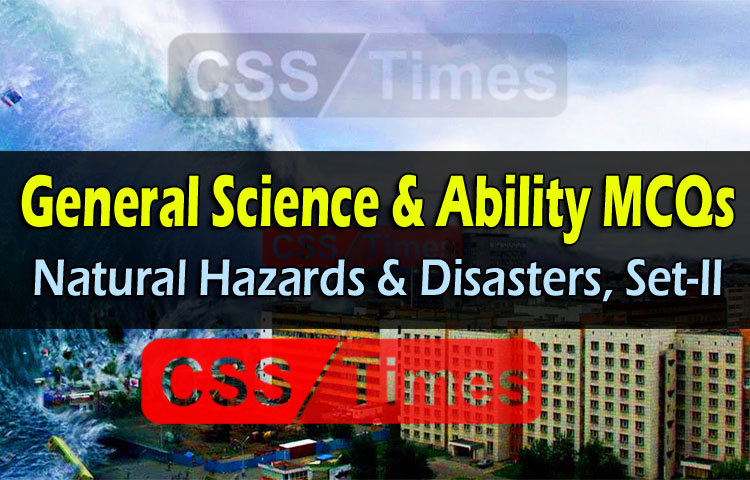Read General Science & Ability MCQs (Natural Hazards and Disasters, Set-I)
An example of a shield volcano is
(a) Mount Fuji
(b) Mount Pinatubo
(c) Puy de Dome
(d) Mauna Loa
Answer: (d)
Mauna Loa is one of five volcanoes that form the Island of Hawaii in the U.S. state of Hawaii in the Pacific Ocean.Mauna Loa is a shield volcano that has erupted some three dozen times since its first well-documented eruption in 1843
Volcanoes that have erupted in historic times and are still likely to erupt, are known as
(a) Active volcanoes
(b) Dormant volcanoes
(c) Extinct volcanoes
(d) Instinct volcanoes
Answer: (b)
Top of magma is forced onto Earth’s surface is known as
(a) Vent
(b) Cone
(c) Pipe
(d) Crater
Answer: (d)
A volcanic crater is a roughly circular depression in the ground caused by volcanic activity. It is typically a bowl-shaped feature within which occurs a vent or vents

